Dimension is a “spherical, stackable, fast-paced puzzle game” for 2 to 4 players (or a beat-your-own-score solo game). Each round players position and stack their 15 spheres to satisfy the conditions laid out by six task cards. These cards set and limit how players use, place, and stack their spheres on their tray. At the end of the round if a player completes a task, they earn points. This would all probably be pretty easy if it weren’t for the fact that players are racing to get this done in just one minute.

Stacking, Solving, Satisfying – The Gameplay
A game of Dimension is played over six rounds. To begin, six task cards are drawn and displayed so that they are clearly visible to all players. These task cards determine the conditions the players must follow that round to earn points. Next the hourglass timer is flipped and players place their spheres on their tray, trying to puzzle out a way to satisfy the task cards. The spheres are designed to stack on the player tray in a pyramid: the first level can hold seven spheres, the second can hold three, and the third level accommodates just one. Once the timer runs out, play stops and point tokens are given to the players as follows:
- gain 1 point for each sphere used on your tray
- lose 2 points for each task that isn’t completed (if all the tasks are completed you don’t gain or lose any points)
- gain 1 bonus token if you used all five colours of spheres and you completed all tasks. Bonus tokens are converted into points at the end of the game depending on how many you have earned.
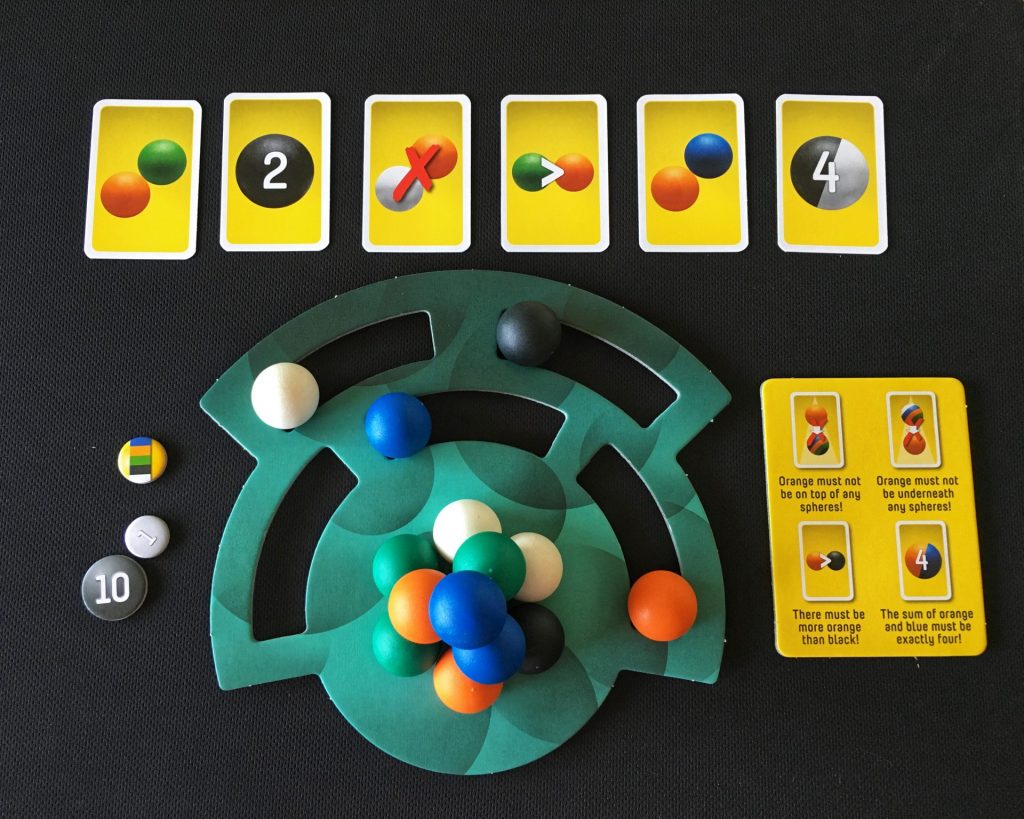
Finally players prepare for the next round by resetting their trays and discarding the six task cards. A new round then begins. At the end of the sixth round, the player with the most points wins.
The Seven Types of Task Cards
Sixty different task cards are included in Dimension and you use just over half of them each game. The tasks are divided into seven different types.
The first three types of task cards focus on specific quantities of coloured spheres that you must have on your tray to complete the task. To satisfy these tasks, the level and position of the spheres don’t matter.

Sometimes two task cards feature the same sphere colour. In this case, there must be enough of those spheres to satisfy both tasks. A single sphere cannot be used to complete more than one of the “quantity” task cards.
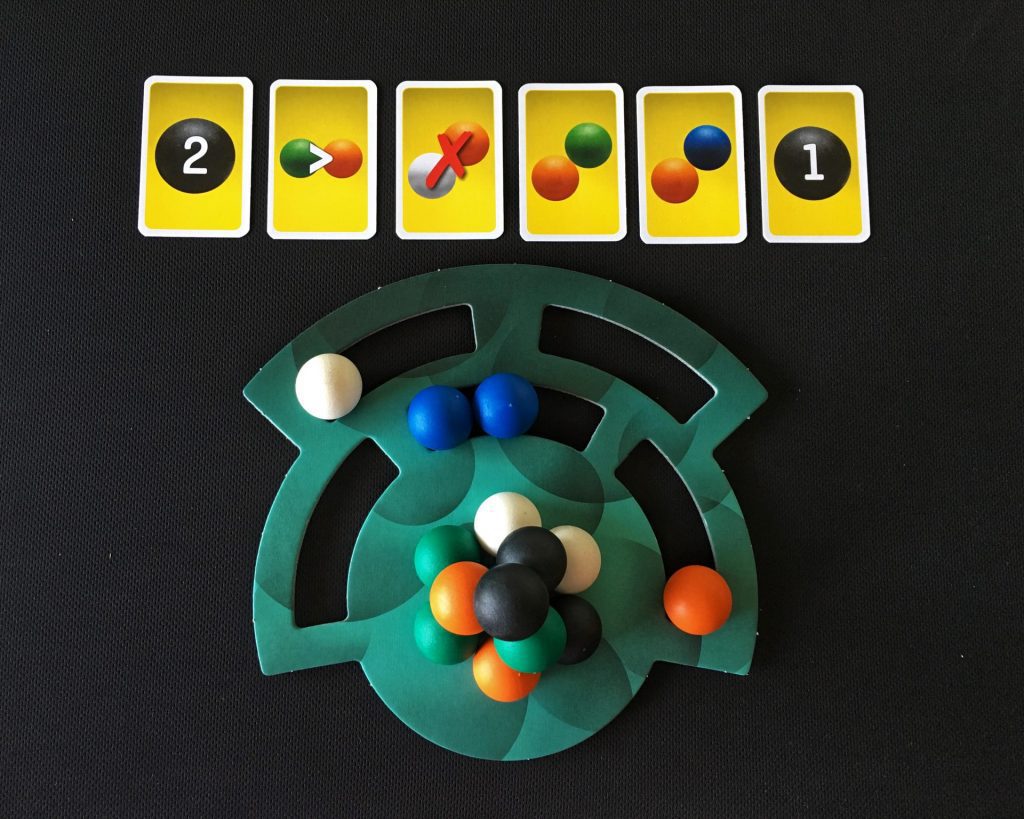
The other four types of task cards have to do with how the spheres are placed and stacked on a player’s tray. Most of the challenge (and fun) in Dimension comes from these kinds of tasks.

If spheres of both colours indicated on the task card are placed on your tray, each of these spheres must touch at least one sphere of the other colour (side by side or on top). However, it is possible to only use spheres of one colour or to not place either colour on your tray. In both of these instances, the task card would be considered completed (and points earned).

There is also a task card of the inverse: spheres must not touch each other. These tasks prohibit the depicted coloured spheres from touching on the tray (whether side by side, above, or below). However, the way the tray and spheres are designed, you can sometimes get away with some clever “not touching” placement.
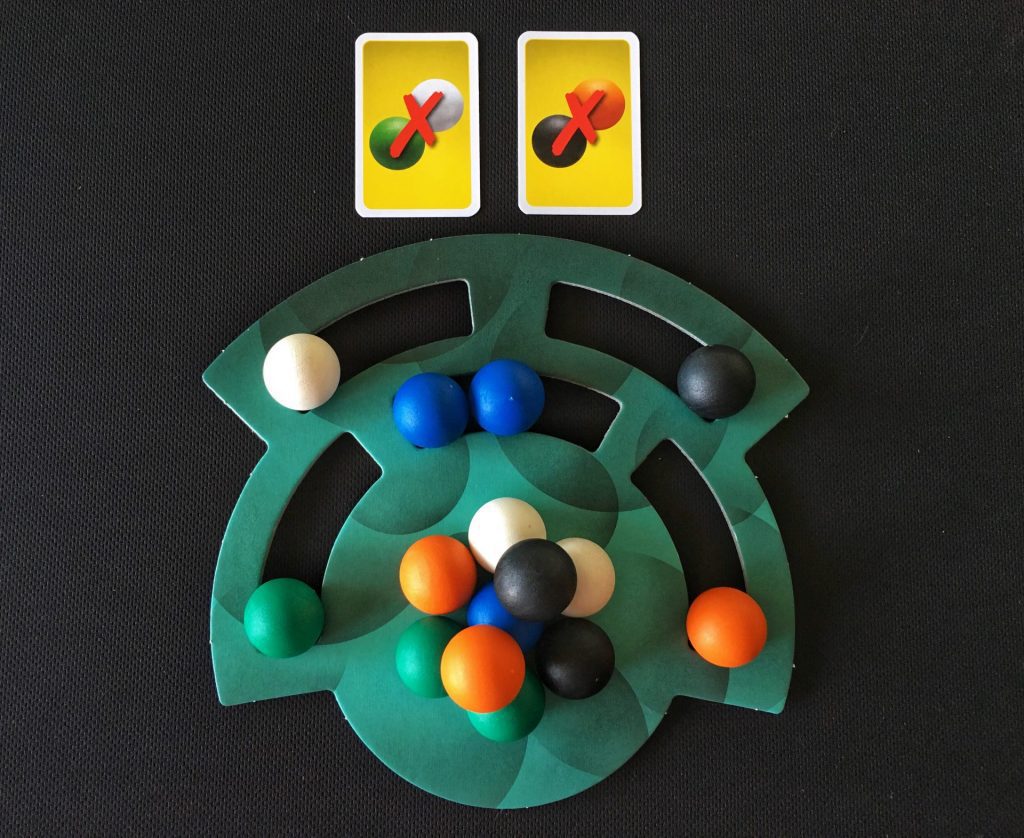
The final two types of task cards limit a player from placing spheres of a certain colour above or below all other spheres.

On these cards, the striped sphere represents any coloured sphere. When a task card notes that a sphere must not be on top of any spheres, the only possible placement for that colour sphere would be on the bottom level (or not on your tray at all).
When it comes to completing the “sphere must not be underneath any spheres” tasks, you can be a bit more wily. This card doesn’t necessarily mean a certain colour of sphere must only be on the third level, it could be on the second level with no spheres placed above it or it can even be placed cleverly on the bottom.

When Task Cards Contradict
Since the task cards are chosen randomly for each round, there are times when they might contradict each other. In such cases, you must decide which you will not follow as you place spheres on your tray and accept the loss of points at the end of the round.
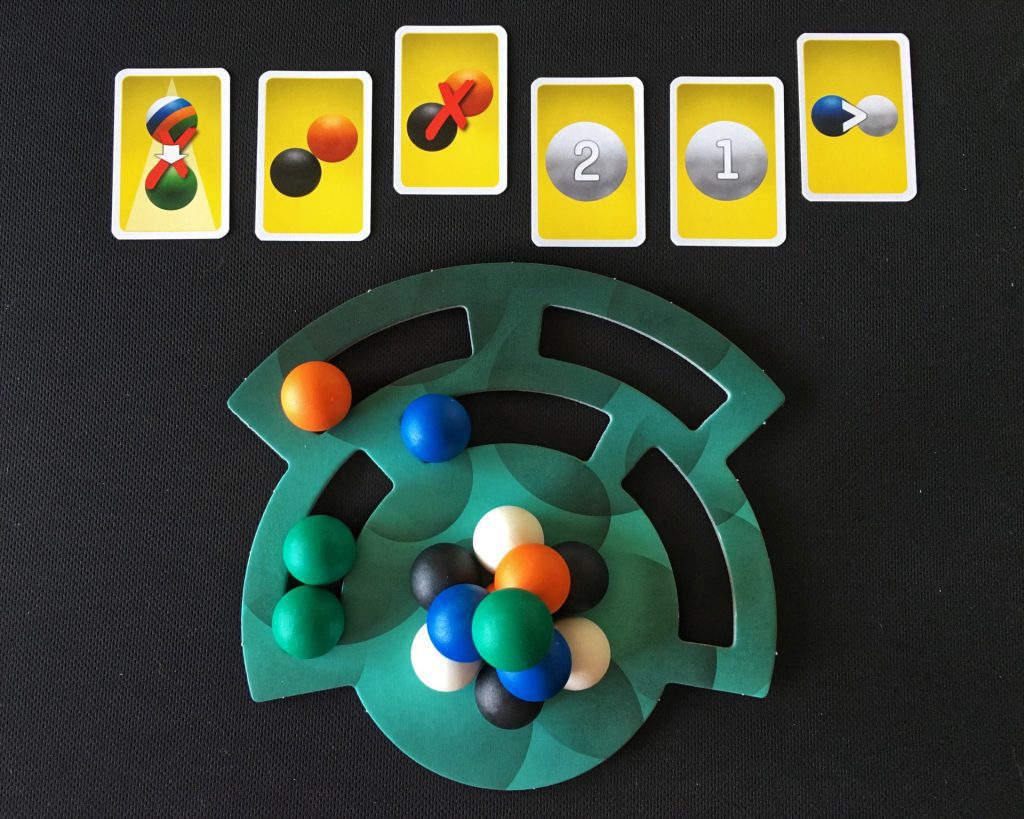
Final Thoughts
I’ve recently discovered that I’m a sucker for a real-time game (I’m looking at you, Jetpack Joyride). Tack on a speed competition to solve a puzzle and I’m completely sold. When I discover a game that combines these two things (real-time/speed games and puzzles), my expectations are high. Dimension exceeded those expectations. When I play against people who are equally as good as me (or as bad depending on how you look at it), the rounds are so tight that winning often comes down to someone’s success in the final round or even the bonus points awarded from the tokens for using a ball of every colour each round.

Sometimes the playing field is a little more uneven with some people doing much better under the time constraint. Nonetheless it’s always awesome to see how each player solved the puzzle in their own way. Some of my favourite gameplay moments in Dimension have come from when the task cards contradict each other and it’s seemingly impossible to complete all six. “We’ll go down together,” you might think to yourself as you decide which task card you’ll ignore. Then the round ends and you look up to see the solution to the cards staring at you from another player’s tray. The combination of cards wasn’t impossible after all! (It is all the more thrilling when you’re the one to have solved the “impossible” challenge…although that doesn’t happen to me very often.)
I would be remiss if I didn’t mention the incredible components in Dimension. The spheres are perfect: they are a good size and they have a nice heft which make them easy to manipulate under pressure. The cardboard player tray has adhesive feet to stop it from sliding around the table. The feet also raise the tray just enough that the spheres sink in the holes nicely.

I realize that sometimes no matter how good a game is, the real-time element can completely turn someone off of it and I won’t pretend that Dimension is the game to change their mind. However, if you like puzzle games and racing against the clock then Dimension is definitely one worth seeking out.



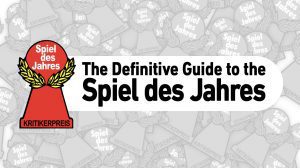







Add Comment